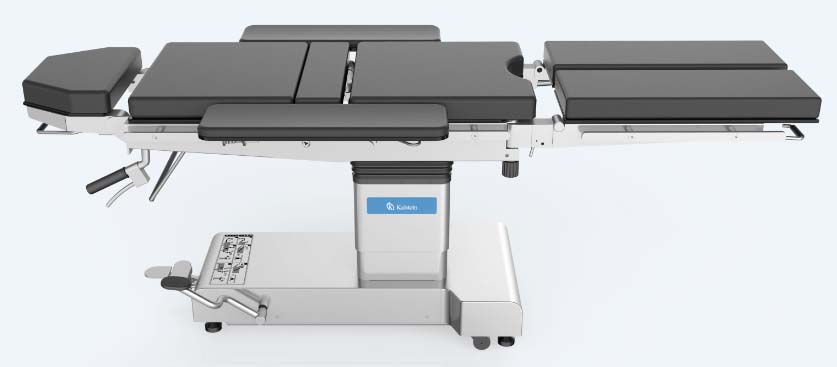Operating tables, also called surgical tables, are used in the operating room to position patients during surgery. They consist of a main platform, on which the patient can sit or lie down and which can be divided into several sections, and a central base which allows the height and tilt of the table to be adjusted. Basically they have:
- Head plaque.
- Module of the back plate.
- Middle central segment.
- Seat Plates/ Legs Module.
- Leg plate module.
- Handle Lever.
- Network Connections Farm.
- Table control switch.
- Connection for potential offset cable.
- Feature plate.
- Handling screw.
- Handle Plate.
- Control unit.
- Female connecting control unit and foot switch.
- Column handling panel.
How does an operating table work?
Operating tables use a power source for various settings, such as table height or tilt. We can find: electrical operating tables and hydraulic operating tables.
What technologies can an operating table possess?
The height and inclination of the sections of the table are usually adjustable for the surgeon’s convenience. In addition, the table supports a multitude of accessories to provide additional support for the patient.
A first distinction is made in the area of operations desks, that is, between universal operations desks and special operations desks, which in turn are declined in different models, depending on the specialties.
- Universal operating tables: for general, digestive and minor surgery. They are very versatile and can be adapted to most cardiovascular, bladder, cosmetic surgery, among others.
- Special Operations Desks: For one or more medical specialties They are distinguished by their configuration and/or specific accessories. For example:
- Gynecologic operating tables: Allow a sitting or recumbent position with Göpel leg rests.
- Orthopedic operating tables: Leg rests and traction frames are usually supported. They have been designed to facilitate intervention and maneuverability and allow the surgeon to easily displace the patient.
- Ophthalmologic operating tables: These are convertible tables with a head rest specific for patient positioning.
What technical criteria should be considered in terms of installation and maintenance of an operating table?
- Size and available space: The size of the table and the space required depending on your different positions. The position of the patient varies according to the type of surgery, hence the importance of taking into account the different movements of the table.
- Power mode: For power tables, for example, a power supply is needed nearby.
- Compatibility of accessories: It will be necessary to check the compatibility of the table with the different accessories depending on the application, such as leg rests, traction racks or pole holders.
- Safety: Patient safety is most important. It will be essential to take into account the antibacterial, antifungal and flame-reducing properties of the table surface. Not to mention the maximum load the table can bear, particularly to avoid any risk of falling obese patients.
In Kalstein We are MANUFACTURERS and we offer you new operating tables at excellent PRICES. So we invite you to take a look: HERE

